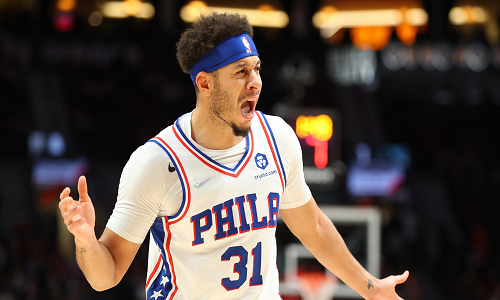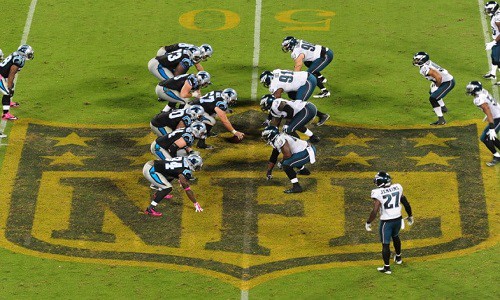Soccer is a sport that attracts many ages as well as diverse players. There are many different models, colors, and shapes of soccer balls to serve each customer segment. Among them, the most important determining factor is size.
Soccer ball for a child compared to an adult will have a marked difference. Choosing the right soccer ball size for the child’s age will stimulate more interest in the game.
So how do you find the correct soccer ball size by age? Let’s find out with Langley Grams in this article.
Contents
Quick Guide For Choosing Soccer Ball Sizes
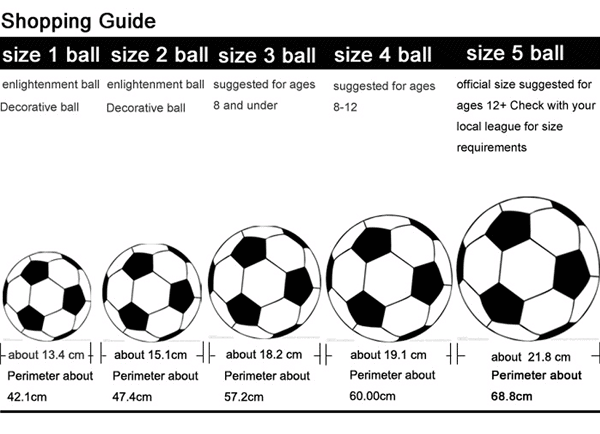
Soccer ball size chart
We will have five types of soccer ball sizes. Each class is suitable for a different audience and intended use. These include:
- Size 5 soccer ball is for adult and professional matches.
- Size 4 soccer ball is for 8 – 12 years old to practice.
- Size 3 soccer ball is for kids from 5 – 8 years old.
- Size 2 soccer ball is for ages 3 – 5 years old.
- Size 1 soccer ball is for kids under three years old and for decoration purposes.
Soccer Ball Size By Age: Detailed Explanation
It is no coincidence that people name and classify the size of soccer balls. Each size is particular and created to serve different purposes. This section will guide you to get the most overview of the dimensions of soccer balls.
View more: How long is a soccer game?
1. Size 1 Soccer Ball
- Age: Preferably under three years old, but everyone can use this one for decorating purposes.
- Dimensions: 18 to 20 inches in circumference.
People often call soccer ball size 1 with another name “minis.” The primary purpose of this type of ball is as a souvenir, gift, or toy. You can see many kinds of minis that come with player names or club logos. Some football fans love collecting balls like this.
With its size, this ball is also highly suitable for children as young as three years old. It’s an excellent way for kids to start practicing basic skills and getting used to the ball.
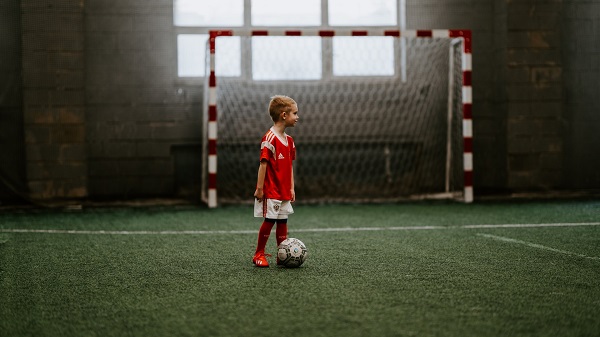
Small soccer ball size is suitable for kids
2. Size 2 Soccer Ball
- Age: Good for kids from 3 – 5 years old.
- Dimensions: 20 to 22 inches in circumference.
- Weight: 250 – 280 grams.
This size 2 ball is a great way to practice skills for kids, hence the name “skills ball.” Some good practices include ball handling, footwork, and ball control. The aim of using these balls is to improve your skills, practice juggling and dribbling. You will find it easier to control the 5th ball afterward.
We recommend this size for ages 3 to 5 when just starting in soccer practice. It’s age-appropriate and won’t embarrass kids when it comes to handling an oversized ball.
This soccer ball size is also the best choice for parents with the question: “What size soccer ball for a 5-year-old and under”?
3. Size 3 Soccer Ball
- Age: Suitable for 5 – 8 years old children.
- Dimension: 23 to 24 inches in circumference.
- Weight: 300 – 320 grams.
In a tough match, the smallest approved ball size is size 3. Players 8 years and under will use it most appropriately, so if you are wondering: “What size soccer ball for a 6-year-old?” It is the answer.
Some children aged 3 – 5 who develop early and have a soccer talent can also use this ball.
Coaches training children’s groups should consider using a soccer ball size 3 in practice. This type of ball helps them not be surprised when playing, more confident, and have better reflexes.
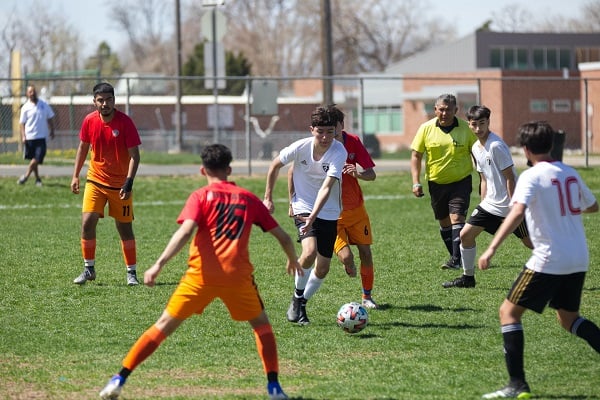
Youth soccer ball size
4. Size 4 Soccer Ball
- Age: Used for kids from the 8 – 12 age group.
- Dimension: 25 to 26 inches in circumference.
- Weight: 350 – 390 grams.
Youth soccer players aged 8 – 12 will love this size 4 ball.
The size and weight make it a perfect training ball. The movement, as well as control, dribbling will be more accessible when using it. You can see that it is not too different from a full-sized ball, but it shows the player’s development.
The transition from a small ball to a standard size ball is not easy. This size 4 ball acts as a bridge. Players can use it to practice for a few years to get strong and enhance their skill set.
5. Size 5 Soccer Ball
- Age: Best for 12+ years old.
- Dimension: 27 to 28 inches (circumference).
- Weight: 410 – 450 grams.
Soccer ball size 5 is the most popular size ball today. It caters to the majority of football players and appears in important sports tournaments.
The size comes with a pretty heavyweight, so we don’t recommend using them with children. They are not strong enough, and their bodies are not developed enough to control this type of ball. If not skillful, injury is entirely possible.
Size 5 soccer ball is also a ball used in professional tournaments. Usually, the board will test them before using them. Please choose balls with the stamp “FIFA Inspected/Approved” to ensure safety.
Why Is It Critical To Use The Right Soccer Ball Size?
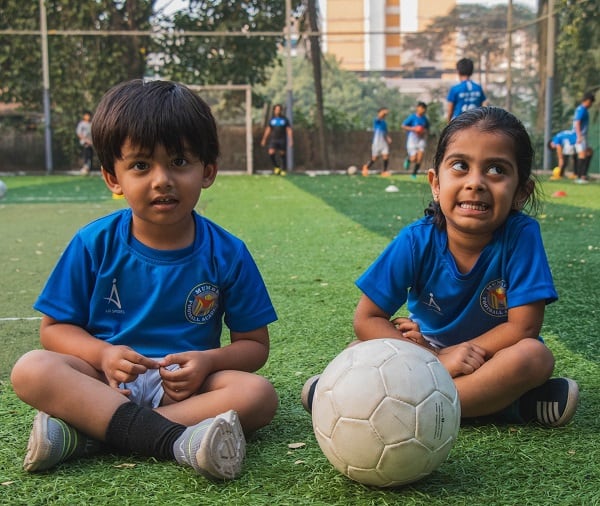
Children need to learn how to play soccer slowly
For adults, choosing a soccer ball size is as easy as a piece of cake. You can use any ball if you like. Anyway, your body and strength have fully developed to handle any situation.
For children, the choice of soccer ball size is decisive.
Kids need more time to get used to the ball and practice skills. Large balls are often oversized and weighted for their bodies and make ball control dangerous. Experts say you should let children get used to small balls slowly and gradually increase with age and time.
Overall, younger players should use the ball with the best-suited size according to their age and skill.
Frequently Asked Questions
If you still have questions regarding how to choose the right size soccer ball, we will answer in this section.
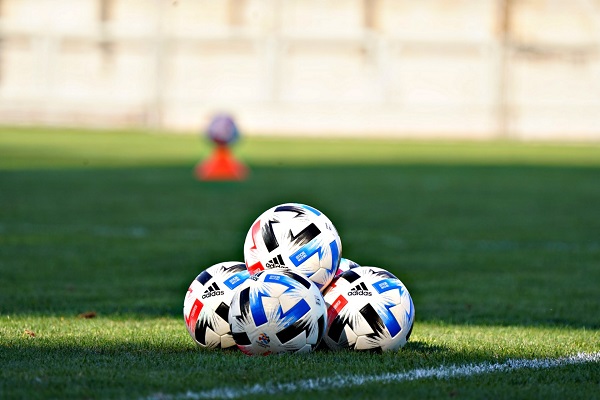
How to measure a soccer ball size
1. How do you calculate the circumference of a youth soccer ball?
Usually, manufacturers will state the size of the balls in the description as you learn about them. Even so, you can still measure and determine its circumference at home to see if it is the best soccer ball size for your child.
One of the most effective methods is to measure the diameter of the ball. You will need to inflate it before taking measurements. The sequence of steps is as follows:
- Place your ball against a closed door and press a book on the opposite side. You can also replace books with other 90-degree tools.
- Measure the dimension from the book to the bottom of the door. That number is the diameter of your ball.
- Multiply the diameter by 3.14 to get the exact circumference.
2. What is the appropriate air pressure for a soccer ball?
The correct air pressure for a youth soccer ball is 8.7 PSI. This figure is in line with the official soccer spec rules.
If you want to measure to determine the exact pressure, use a pressure gauge.
The pressure at 8.7 PSI is just enough to control the ball quickly. With enormous pressure, the ball will stretch and bounce away every time we touch it, causing us to lose control. Balloons with low pressure deflate and move slowly.
Some of the factors which affect air pressure include weather, temperature, and player skill.
3. Why does the old soccer ball look more extensive than the new soccer ball?
When you use a soccer ball frequently, the air pressure inside stretches the threads. In the long run, it causes the soccer ball to expand. People showed that an old soccer ball could be 20% larger than a new soccer ball of the same type.
The material of soccer balls also plays a vital role in changing their size.
For street football or youth soccer, this is not very important. However, in the official competition, everything must be adjusted. FIFA states that they will only use new soccer balls in all the matches.
Final Thoughts
Choosing a suitable soccer ball size needs to be very careful, especially when selecting it for children. A ball with the right size will stimulate the ability to develop and practice skills effectively. On the contrary, using a soccer ball that is too big or too small will have some consequences.
It would be great if our article helps you understand more about choosing soccer ball size based on player ages. Please tell us your thoughts in the comments!




